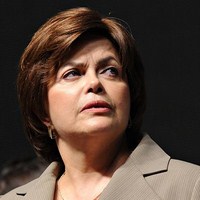Since coming to office in January 2011, Brazilian President Dilma Rousseff has had to contend with annual economic growth slumping from 7.5 percent to 0.9 percent. Rather than introducing economic reforms—the president interpreted her mandate as one of continuing the policies set out by her predecessor, Luiz Inacio Lula da Silva—Rousseff’s team blamed a strong Brazilian currency for slow growth and nagging inflation. So, given that the value of the Brazilian real fell 10 percent against the dollar from May to June, reaching a four-year low, one would expect the government to be celebrating the new opportunity to export Brazilian goods at cheaper prices. Nothing could be further from the truth.
Certainly the real has weakened at a time of anemic growth, but whereas an economic slowdown often brings with it the silver lining of lower inflation, this hasn’t been the case in Brazil. Earlier this year inflation rose above 6.5 percent, the threshold set by Brazil’s central bank as the limit of what’s tolerable. In response, the central bank hiked benchmark interest rates three times, most recently on July 12, making Brazil the only OECD country to raise interest rates in 2013. Further hikes may be in the offing—a recent survey of economists suggests prime lending rates will near 10 percent by 2014—but so far the countermeasures show little progress in tamping down inflation.
Many of Brazil’s iconic businesses have already been squeezed by the combination of high inflation and the real’s swoon. Thanks to the cheaper currency, the state-owned energy giant Petrobras has been saddled with higher costs for imported equipment, and has seen its oil output steadily decline. Petrobras stock, which traded at $41 a share in the months after Rousseff entered office, now goes for $13.

